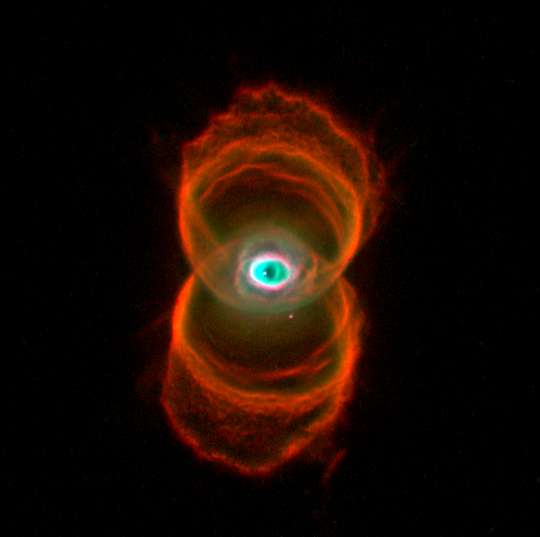Astronomy The core of the Milky Way seen like never before
Chronicles of the Cosmos The space missions that will amaze us in 2022
Six rings of gas and dust have been detected surrounding the star V Hya.
They possibly represent the last gasps of this dying star.
red giant
V Hya is a carbon-rich variable star located 1,300 light-years away in the constellation Hydra.
In its youth it had twice the mass of the Sun
but, like all stars of this type, as it ran out of nuclear fuel in the central region, it destabilized and swelled, thus becoming a red giant star, and has been losing part of its mass during this process.
It is known that, as these evolved stars become destabilized, they begin to pulsate and their brightness begins to oscillate periodically.
V Hya's brightness waxes and wanes every 530 days, a value of the same order as that observed in Mira (332 days) and in other red giants.
We also know that such stars are the forerunners of fascinating planetary nebulae
, objects that dazzle us with both their color and striking symmetries
.
However, the details of how a red giant star can become a planetary nebula are unknown.
rashes
V Hya caught the attention of astronomers years ago for presenting plasma ejections that repeat every 8.5 years.
Such eruptions are caused by a companion star that, in its orbit around V Hya, passes practically through its atmosphere with the cited period of 8.5 years.
In addition to this, V Hya has another companion: a giant star that orbits at a much greater distance.
An international team of astronomers led by Raghvendra Sahai, an astronomer at NASA's Jet Propulsion Laboratory, using the Hubble Space Telescope and the ALMA Large Radio Telescope (Atacama, Chile), have now discovered a system of six rings of dusty material around V Hya .
These rings are slowly expanding from the central position where the star is.
Perpendicular to the plane of the rings extends
an hourglass-shaped structure of gas ejected at high velocity
.
They are two large supersonic jets that carry gas from the periphery of the stellar atmosphere into space.
Sahai and colleagues think that these structures (the rings and the hourglass) have been created by the combined effect of the two companions orbiting V Hya.
Carbon monoxide
Until now, it was thought that during the transformation process that a red giant star undergoes to become a planetary nebula,
the star must lose part of its matter gradually and constantly over time
.
The new observations of V Hya show that, at least in this case, matter does not flow out of the star continuously, but rather episodically, giving rise to this series of expanding rings.
The six rings of V Hya have been studied in detail thanks to the carbon monoxide emissions they contain.
The rings have been expanding for about 2,100 years, adding mass and fueling the growth of an outer, disk-shaped structure that has been forming around the star.
Astronomers have called such a structure a 'Disk Undergoing Dynamical Expansion' or DUDE.
Hourglass Nebula.NASA/ESA/HST
Simultaneously, the star is ejecting bipolar jets of gas that emerge in the direction perpendicular to the plane of the rings with speeds close to 240 kilometers per hour.
It is not the first time that these structures have been observed in old stars
, the prototype is the MyCn18 nebula, also known as the Hourglass Nebula.
The structure of the latter gives us an indication of how V Hya is going to evolve in the future.
explosive transformation
It is not well known what relationship there may be between the bipolar jets and the V Hya rings, but it is clear that the star's mass loss mechanism is not something gradual and constant, as had been guessed at first, but that it happens episodically, with explosions occurring periodically.
It would be convenient to study more objects of the V Hya type, in full transition from red giant to planetary nebula, but the problem is that, in astronomical terms, this transition is very fast (it only lasts a few thousand years) and, therefore, Therefore,
it is not easy to catch stars in the sky that are going through this critical moment
.
Sahai and colleagues' paper, "The rapidly evolving AGB star, V Hya: ALMA finds a multi-ring circus with high velocity outflow," will be published soon in The Astrophysical Journal.
The manuscript can be consulted at this link.
Rafael Bachiller
is director of the National Astronomical Observatory (National Geographic Institute) and academic of the Royal Academy of Doctors of Spain.
Conforms to The Trust Project criteria
Know more

